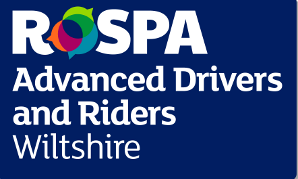Most people find that incorporating a commentary into their drives is one of the most difficult areas of their training. Strictly speaking, commentary is not mandatory on a RoADAR test but we strongly recommend that everyone should attempt a commentary for at least part of their test.
Here are a few basic Commentary starters:
- Away in the far distance…
- Noting…
- You will see that…
- See how I…
- On the offside…
- On the nearside…
- We are warned of…
- We are advised of…
- We are ordered to…
- The Highway Code states that…
- Roadcraft states that…
- The correct following position is…
- The car/lorry in front is…
- The car/lorry behind is…
- The more the paint the more the danger
- The less the paint the less the danger
- The larger the sign the greater the hazard
- The road ahead bends to the…
- The bend is a gradual/blind/acute/open…
- Brakes to slow – gears to go
- Speed is matched to vision
- Gears are matched to speed
- Scanning ahead…
- Scanning left and right…
- The overall stopping distance is…
- Applying the ‘two second rule’…
- Taking up a position into the nearside for safety-stability-view
- Taking up a position to the left of centre for stability-view-safety
- Taking, using and giving information…
- Correct position, correct speed, correct gear…
- Watching carefully…
- Early vision, early decision
- Looking over, under and through the vehicle ahead
- Planning to stop, looking to go
- Third gear – flexible, responsive
- Able to stop on own side of road, within the distance that I can see to be clear
- Safety margin…
- Overtaking position…
Useful phrases from Roadcraft:
- The purpose of the system of car control is to prevent accidents by providing an approach to hazards which is safe, systematic, simple and applicable in all circumstances.
- The SOCC gives you that essential aspect of safe driving – time to react.
- The SOCC is a way of approaching and negotiating hazards that is methodical, safe and leaves nothing to chance.
- It promotes careful observation, early anticipation and leaves nothing to chance.
- It gives you the time to select the best position, speed and gear to negotiate hazards safely and efficiently.
- Information phase includes taking, using and giving information.
- A hazard is anything that is potentially dangerous.
- Three types of hazard – physical features (junctions, roundabouts, etc); other road users; variations in road surface/weather conditions/visibility
- Right position; Right Speed; Right time
- Be able to stop on your own side of the road within the distance you can see to be clear.
- Only a fool breaks the two second rule.
- The standard position on the road is the one which gives you the best view but with careful regard to safety.
- The limit point is the further point along a road to which you have an uninterrupted view of the road surface (where the left hand side of the road appears to intersect with the right hand side). Match your speed to the speed at which the limit point appears to move.


